Onsite Wastewater
Conventional onsite wastewater treatment systems (septic tank, soil absorption system) are the primary form of wastewater management in areas of Massachusetts that do not have centralized sewer
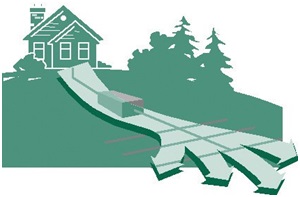
Septic systems that are not properly sited or maintained are major contributors of nonpoint source pollution to rivers, coastal waters, groundwater, and surface water. Even systems that are properly designed and maintained septic systems do not effectively remove nitrogen, a problematic nutrient in marine environments. As a result, systems sited close to water bodies, particularly in coastal areas, will cause water quality problems even when well maintained. Phosphorus, the critical nutrient that affects freshwater, is effectively attenuated by the soil component of a leaching facility and is therefore less of a problem in an efficiently functioning onsite system. For failed systems, pollutants include nutrients and harmful pathogens that can degrade both recreational and drinking water supplies.
Onsite wastewater systems are used to treat wastewater flows under 10,000 gallons per day from homes and commercial facilities that are not connected to a public sewer. A typical septic system consists of an underground septic tank, distribution box, and soil absorption system. Conventional systems accept both graywater (wastewater from showers, sinks, and laundry) and blackwater (wastewater from toilets). Conventional septic systems work well and can last a long time if (1) they are installed in areas with appropriate soils and hydraulic capacities and (2) they are designed to treat the incoming waste to meet public health, groundwater and surface water performance standards. Proper design, installation, operation, and maintenance are required to ensure long-term septic system performance. Innovative and alternative systems are available for use in Massachusetts to provide higher levels of treatment and a better effluent quality.
In Massachusetts, Title 5 (310 CMR 15.000 of the Massachusetts Environmental Code,
http://www.mass.gov/eea/docs/dep/service/regulations/310cmr15.pdf) provides specifications for the siting, construction, upgrade, and maintenance requirements of onsite sewage systems. Local Boards of Health regulate septic systems with MassDEP oversight in certain situations. As discussed in detail in this section, proper system management is the most important onsite wastewater issue for municipal officials.
A Conventional Septic System
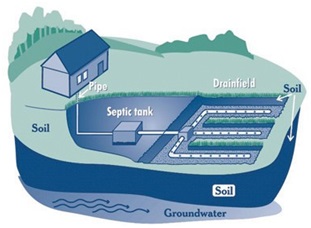
Conventional septic systems consist of a septic tank, a distribution box and a soil absorption system, all connected by pipes (called conveyance lines). A conventional septic system is capable of removal of suspended solids, biodegradable organic compounds, and pathogens if properly designed, sited, operated and maintained.
Septic systems treat household wastewater by temporarily holding it in the septic tank where heavy solids and lighter scum separate from the wastewater. This separation process is known as primary treatment. Solids stored in the tank are decomposed by bacteria and later removed, along with the lighter scum, by a septic tank pumper.
After partially treated wastewater leaves the tank, it flows into a distribution box and then into a network of soil absorption system trenches or chambers. Drainage holes at the bottom of each line allow the wastewater to drain into aggregate (gravel/crushed stone) trenches for temporary storage. These trenches are commonly filled with aggregate (gravel/crushed stone), or use other approved materials such as molded polyethylene. This effluent then slowly seeps into the subsurface soil where it is further treated and purified (secondary treatment). As of October 2014, the minimum allowable percolation rate for onsite disposal systems in Massachusetts is 60 minutes per inch See more information on percolation rate regulations at
310 CMR 15.000.
A critical siting component is the vertical separation distance from the bottom of the drainfield and the estimated high groundwater elevation. This separation creates an aerobic environment that is essential for stabilizing the wastewater and removing many pathogens. In Massachusetts, Title 5 requires the minimum vertical separation distance between the bottom of the stone underlying the soil absorption system and the high ground-water elevation to be:
- 4 feet in soils with a recorded percolation rate of more than 2 minutes per inch; or
- 5 feet in soils with a recorded percolation rate of 2 minutes or less per inch.
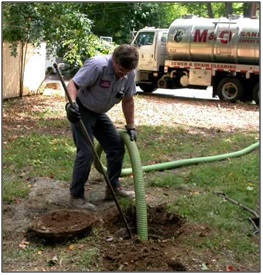 The accumulated solids in the bottom of the septic tank should be pumped out at least every 3 years to prolong the life of your system.
The accumulated solids in the bottom of the septic tank should be pumped out at least every 3 years to prolong the life of your system.
Septic systems must be maintained regularly to function properly. If solids are not removed regularly, they will eventually accumulate in the septic tank and overflow into the soil absorption system. This destroys the leach field by plugging the outlets and pore spaces so that the effluent cannot filter out.
Title 5 requires the inspection of onsite sewage disposal systems at the time of transfer of title of the facility served by the system, unless "the facility is subject to a comprehensive local plan of onsite septic system inspection approved in writing by the Department and administered by a local or regional governmental entity, and the system has been inspected at the most recent time required by the plan." The purpose of the inspection is to ensure that the system is appropriately sized and correctly functioning at the time of the inspection. Failed systems are required to be repaired. Septic systems fail because of improper design, improper installation, and over-loading of waste and water.
Homeowner Septic System Management Tips
✓ DO have your tank pumped out and system inspected every 3 to 5 years by a licensed septic contractor.
✓ DO keep a record of pumping, inspections, and other maintenance.
✓ DO practice water conservation. Repair dripping faucets and leaking toilets, run washing machines and dishwashers only when full, avoid long showers, and use water-saving faucets, showerheads and toilets.
✓ DO learn the location of your on-site system and drain field. Keep a sketch of it handy for service visits. If your system has a flow diversion valve, learn its location, and turn it once a year. Flow diverters can add many years to the life of your system.
✓ DO divert roof drains and surface water from driveways and hillsides away from the septic system. Keep sump pumps and house footing drains away from the septic system as well.
✓ DO take leftover hazardous household chemicals to an approved hazardous waste collection center for disposal. Use bleach, disinfectants, and drain and toilet bowl cleaners sparingly and in accordance with product labels.
✗ DON’T allow anyone to drive or park over any part of the system. The area over the drain field should be left undisturbed with only a mowed grass cover. Roots from trees or shrubs may clog and damage your drain lines.
✗ DON’T make or allow repairs to your on-site system without obtaining the required health department permit. Use professional licensed contractors when needed
✗ DON’T use commercial septic tank additives. These products usually do not help and some may damage your system.
✗ DON’T wait until the weekend to do all the laundry - space out laundry, dishwashing, showers so the system is not hydraulically overloaded
✗ DON’T use your toilet as a trash can by dumping nondegradables down your toilet or drains. Also, don’t poison your on-site system and the groundwater by pouring harmful chemicals down the drain. They can kill the beneficial bacteria that treat your wastewater. Keep the following materials out of your system.
- Nondegradables: grease, disposable diapers, plastics, etc.
- Poisons: gasoline, oil, paint, paint thinner, pesticides, antifreeze, etc.
- Unused Medications: Many towns have collection/disposal events for unused medications. Check with your Board of Health for proper medication disposal in your town.
Onsite Wastewater Pollutants
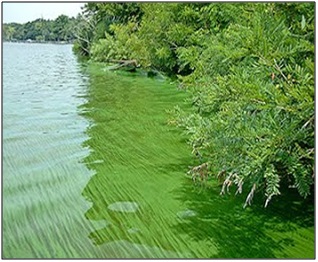
The primary pollutants associated with onsite wastewater, nutrients and pathogens, are described below.
Nutrients
Excessive nutrients in a waterbody can have disrupting effects on the natural environment, such as causing a rapid increase in the abundance of aquatic plants and algae. By fueling increased biological productivity, excess nutrients accelerate the natural aging process of water bodies, known as eutrophication.
As described below, the primary nutrients associated with onsite wastewater (nitrogen and phosphorus) present different concerns in marine and freshwater environments.
Nitrogen is a plant nutrient that can contribute to eutrophication, especially coastal embayments or brackish waters, and reduce dissolved oxygen levels in surface waters. Excessive amounts of nitrogen can also harm human health. For instance, ingesting excessive levels of nitrate (a form of nitrogen often found in fertilizer) from drinking water can cause serious illness and sometimes death. In infants, the conversion of nitrate to nitrite by the body can interfere with the oxygen-carrying capacity of the child’s blood.
Typical nitrogen concentrations in residential wastewater are in the range of 40-100 mg/l. (USEPA, 2002b). Nitrogen contamination of groundwater below the leaching fields from septic systems has been widely documented. Research conducted by the Massachusetts Alternative Septic System Test Center (MASSTC,
http://www.masstc.org) found that a typical onsite septic system will remove from 21- 25% of the nitrogen load (Costa et. al 2002). The problem develops when the density of septic systems from residential development exceeds the dilution capacity of the area and groundwater with high concentrations of nitrogen discharges to stream, lakes, ponds and coastal estuaries. Because of the difficulty of predicting soil nitrogen removal rates, Massachusetts has determined a process for limiting the number of septic systems allowed in nitrogen-sensitive areas. The Title 5 regulations (310 CMR 15.000) apply a process called Nitrogen Aggregate Loading, where the allowable number of onsite septic systems is limited in nitrogen sensitive areas (Zone II’s to public water supplies and identified sensitive coastal areas) to protect public water supplies and coastal areas.
Phosphorus is also a pollutant of concern from septic systems. Phosphorus is an important plant nutrient that, like nitrogen, can contribute to eutrophication and dissolved oxygen depletion in surface waters. For most freshwater ecosystems in Massachusetts, phosphorus is the essential plant nutrient which is in shortest supply relative to the growth needs of plants and algae. As the "limiting nutrient", increases in its supply will directly increase plant and algae abundance. In saltwater coastal ecosystems, nitrogen is typically the limiting nutrient. Fortunately, phosphorus is rapidly used by plants and can easily be bound to fine soil particles. However, research has also shown that there is a limit to the amount of phosphorus that can be bound in the soil, after which the phosphorus will move with the groundwater and eventually discharge to a waterbody.
Pathogens
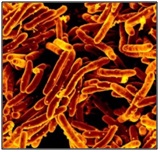
Human fecal matter and urine contain harmful pathogenic microorganisms that can cause dysentery, hepatitis, food poisoning and parasite infections in humans. Pathogens include parasites, bacteria and viruses that can cause communicable disease through direct or indirect body contact or ingestion of contaminated water or shellfish. Pathogens can be transported for considerable distances in groundwater or surface water.
The occurrence and concentration of pathogens in domestic wastewater depends on the sources contributing to the wastewater, infected individuals, and environmental factors that control pathogen survival. For example, most microorganisms survive longer at lower temperatures and high humidity. Sunlight will kill most microorganisms. Although viruses can survive in fresh water and sewage up to 120 days, their survival length is typically less than 50 days. Bacteria have a shorter survival time (10-30 days), although research has found bacteria survival times of longer than 6 months and travel in the groundwater beyond 100 feet (USEPA, 2002b). Conventional septic systems result in retention and die-off of most pathogenic bacterial indicators within 2 to 3 feet of the drainfield, as long as aerobic conditions are maintained by ensuring adequate separation between the bottom of the soil absorption system and the groundwater table. Therefore, adequate separation from groundwater is a critically important element of the system to ensure effective pathogen treatment.
Viruses are only found in septic systems where there are infected individuals. This makes it difficult to monitor and predict how long they will last and how far they can travel from the septic system.
| PATHOGEN TYPE | ORGANISM | DISEASE | EFFECTS |
| Bacteria | Escherichia Coli | Gastroenteritis | Vomiting, diarrhea, death in susceptible populations |
| Legionella pneumophila | Legionellosis | Acute respiratory illness |
| Leptospira | Leptospirosis | Jaundice, fever |
| Salmonella typhi | Typhoid Fever | High fever, diarrhea |
| Salmonella | Salmonellosis | Diarrhea, dehydration |
| Shigella | Shigellosis | Bacillary dysentery |
| Vibro cholerae | Cholera | Heavy diarrhea, dehydration |
| Yersinia enterolitica | Yersinosis | Diarrhea |
| Protozoans | Balantidium coli | Balantidiasis | Diarrhea, dysentery |
| Cryptosporidium | Cryptosporidiosis | Diarrhea |
| Giardia lambia | Giardiasis | Mild to severe diarrhea |
| Viruses | Adenovirus | Conjunctivitis | Eye infections |
| Entrovirus (67 types, e.g. polio, echo, Coxsackie viruses) | Gastroenteritis | Heart abnormalities, meningitis |
| Hepatitis A | Infectious Hepatitis | Jaundice, fever |
| Norwalk agent | Gastroenteritis | Vomiting, diarrhea |
| Reovirus | Gastroenteritis | Vomiting, diarrhea |
| Rotavirus | Gastroenteritis | Vomiting, diarrhea |
Financial Assistance Opportunities for System Owners
MassDEP Community Septic Management Program

The Community Septic Management Program (CSMP) provides funding of up to $200,000 in the form of low cost loans to allow communities to devise a Community Inspection Plan or a Local Septic Management Plan.
- Community Inspection Plan: The community devises a plan to protect environmentally sensitive areas from contamination from septic systems. Inspections must be performed every seven years. This plan relieves property owners covered under the plan of their obligation to have the septic system inspected upon transfer of ownership.
- Local Septic Management Plan: Identifies, monitors and addresses operation, maintenance and upgrade of septic systems in a comprehensive manner. This plan does not require periodic inspection or relieve the obligation to have the system inspected at time of property transfer.
Both plans must include the provision of financial assistance to homeowners using betterment agreements. For more information visit:
http://www.mass.gov/eea/agencies/massdep/water/wastewater/the-community-septic-management-program.html
Betterments
Communities may provide financial assistance to homeowners for the repair, replacement, or upgrade of failed onsite systems using Betterment Agreements, which are a financial agreement between a homeowner and the community. The "Betterment Agreement" outlines the rights and responsibilities of the community and the homeowner for the repair, replacement or upgrade of the homeowner's onsite system. The homeowner typically contracts with a licensed installer and engineer to perform the work. For more information visit:
http://www.mass.gov/eea/agencies/massdep/water/wastewater/betterments.html
- Tax Credit: Any owner of a Massachusetts residential property who occupies the property as his or her principal residence is allowed a tax credit for the expenses incurred in the repair or replacement of a failed cesspool or septic system. The maximum amount of the credit that may be claimed in any tax year is $1500. The maximum aggregate amount of the credit that may be claimed is $6000. For more information on the specific qualification criteria, you should contact the Massachusetts Department of Revenue at (617) 887-6367 or visit http://www.mass.gov/dor/.
- Mass Housing Finance Agency (MassHousing): MassHousing offers low-cost financing to those who qualify. For more information, contact MassHousing at (617) 723-0500 or visit https://www.masshousing.com.
- Federal Farmers Home Administration (FHA): FHA offers low-cost financing to those who qualify. For more information contact FHA:
- Multi-family home: (202) 708-2495
- Single-family home: (202) 708-3175
Development of Municipal Onsite Wastewater Management Programs
Development of a comprehensive management program for onsite wastewater systems is being promoted by the USEPA and MassDEP as an important step that communities must take to ensure that onsite wastewater systems do not fail to perform as designed. USEPA has recognized the need for a comprehensive management framework for communities to use to develop and improve onsite wastewater management programs. In fact, they have developed guidelines and a management handbook for municipalities to use to develop local programs.
Many case studies from around the country have documented that onsite wastewater systems lack adequate management and oversight, which results in inadequate pollutant treatment. The first step in understanding this issue is to recognize that onsite wastewater systems (both conventional and innovative/alternative systems) are a cost-effective and environmentally sound approach to wastewater management in many areas. Centralized collection and wastewater treatment is not the only future solution to wastewater management. Communities must weigh the large capital and maintenance costs for installing centralized wastewater systems against developing a management program for onsite systems.
Elements of a Successful Onsite Wastewater Management Program
The success or failure of an onsite wastewater management program depends upon public acceptance and local political support; adequate funding; trained technical and field staff; and clear legal authority, regulations and enforcement mechanisms. EPA has developed five management models around which communities can develop onsite wastewater management programs. These models progressively increase the amount of management controls that a community must implement (see the Onsite Wastewater Management Models below). EPA recommends that communities with sensitive resources consider developing programs at the higher tiers in the model.
| Onsite Wastewater Management Models (from Voluntary National Guidelines for Management of Onsite and Clustered (Decentralized) Wastewater Treatment Systems, USEPA, 2003) |
| Management Model 1 - "Homeowner Awareness" specifies program elements and activities where systems are owned and operated by individual property owners in areas of low environmental sensitivity. This program is adequate for conventional systems that require little owner attention. To help ensure that timely maintenance is performed, the regulatory authority mails maintenance reminders to owners at appropriate intervals. |
| Management Model 2 - "Maintenance Contracts" specifies program elements and activities where more complex designs are employed to enhance the capacity of conventional systems to accept and treat wastewater. Because of treatment complexity, contracts with qualified technicians are needed to ensure proper and timely maintenance. |
| Management Model 3 - "Operating Permits" specifies program elements and activities where sustained performance of treatment systems is critical to protect public health and water quality. Limited-term permits are issued to the owner and are renewable if the owner demonstrates compliance with the conditions of the permit. Performance-based designs may be incorporated into programs with management controls at this level. |
| Management Model 4 - "Responsible Management Entity (RME) Operation and Maintenance" specifies program elements and activities where frequent and highly reliable operation and maintenance of decentralized systems is required to ensure water resource protection in sensitive environments. Under this model, the permit is issued to an RME instead of the property owner to provide assurance that maintenance is performed. |
| Management Model 5 - "RME Ownership" specifies that program elements and activities for treatment systems are owned, operated, and maintained by the RME, which removes the property owner from responsibility for the system. This program is analogous to central sewerage and provides the greatest assurance of system performance in the most sensitive of environments. |
Key concepts for onsite wastewater management programs include:
- An increase in the level of management as the level of risk and technical complexity increase;
- Inventory of (at a minimum) existing systems and their level of performance;
- Operating permits for large systems and clusters of onsite systems;
- Discharge permits for systems that discharge to surface waters;
- Increased requirements for certification and licensing of practitioners; and
- Elimination of illicit discharges to storm drains or sewers.
Innovative/Alternative Onsite Septic Systems
The Title 5 regulations include provisions to promote the use of innovative/alternative (I/A) systems through the development of approval processes for more widespread use of alternative onsite septic system technologies. An I/A system is any onsite sewage treatment system or part of one that is not designed or constructed in a way consistent with a conventional Title 5 system. A conventional system has a septic tank, a distribution box or dosing mechanism, a soil absorption system (SAS) and a reserve area. Some examples of alternative systems are recirculating sand filters, aerobic treatment units, trickling filters, peat filters, humus/composting toilets, and intermittent sand filters.
Most Massachusetts homes without access to municipal sewers use conventional septic systems for onsite wastewater treatment and disposal. However, site limitations can make it difficult to replace a failing cesspool or septic system with a conventional septic system that will meet state standards. I/A systems have several advantages:
- They are generally better than conventional septic systems at removing solids and other pollutants from wastewater before they go to the SAS.
- The SAS following an I/A technology can be expected to have a longer life.
- I/A technology can also provide advanced treatment to reduce the wastewater’s nitrogen content. For this reason, nitrogen reducing systems may be required for new construction, including additions to existing homes, near a private or public water supply well or other nitrogen-sensitive areas.
In most cases, Boards of Health are required to oversee the operation and maintenance of I/A systems.
Categories of I/A System Approvals in Massachusetts
Technologies that are approved for use in Massachusetts are constantly changing. MassDEP has developed a program where I/A systems can be approved for use in Massachusetts according to the following four categories:
- General Use Approval
- Provisional Use Approval
- Pilot System Approval
- Remedial Use Approval
As of September 2014, 34 I/A systems are certified for general use in Massachusetts. An additional 10 systems are certified for provisional use, 7 systems are approved for piloting, and 30 systems are approved for remedial use.
The Massachusetts Alternative Septic System Test Center (MASSTC)
MASSTC began in 1999, testing advanced onsite septic treatment technologies under the USEPA Environmental Technology Initiative (ETI). Today, MASSTC is operated by the Barnstable County Department of Health and Environment with joint funding from USEPA and MassDEP. MASSTC continues to conduct testing and allow for the research and development of products that remove the myriad of contaminants found in domestic wastewater, with a particular focus on advanced nitrogen removal technologies in support of coastal ecosystem health. Its facility can accommodate over 20 concurrent tests, allowing companies to conduct research and development on their products or complete any number of standardized test protocols. For more information, visit:
http://www.masstc.org/
Onsite Wastewater Resources
